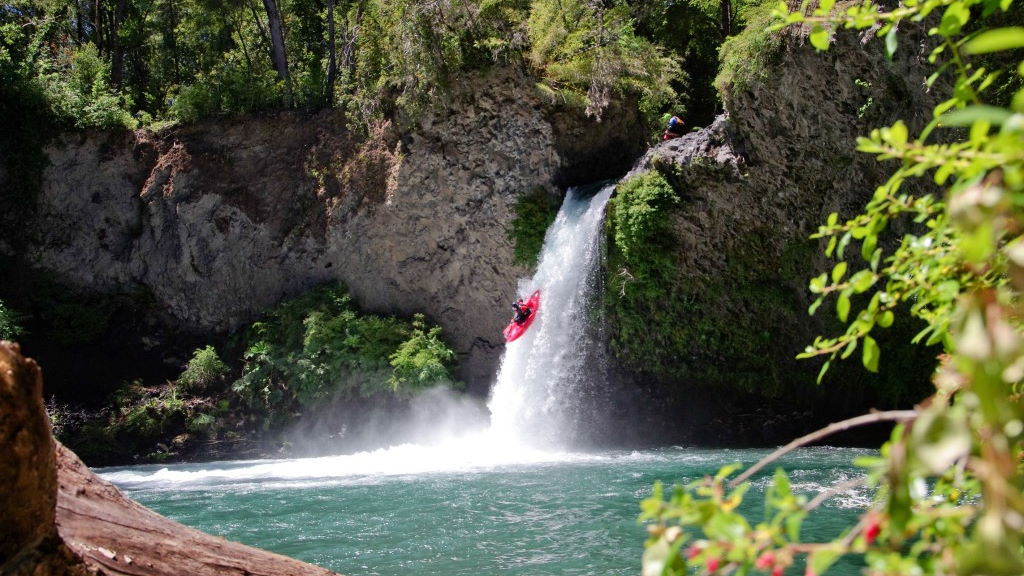Río Petrohué (Upper)

Kurt Casey
The Río Petrohué drains Lago Todos los Santos in Parque Nacional Vicente Perez Rosales. It is the largest park in the Chilean Lake District and adjoins Parque Nacional Nahuel Huapi in Argentina to form one of the biggest contiguous tracts of protected trans-Andean wilderness in South America. Established in 1926, it is the second oldest national park in Chile.
Beware: Petrohué means “place of flies” in Mapuche, and no one doubts that the hard-biting tabanos and Culihuachos rule here in December and January. But don’t let the flies deter your plans, great whitewater abounds on the upper Petrohué. The action includes big, bouncy, class IV drops, surfing waves, and friendly play holes. Approximately 3 km below the put-in, a volcanic wash draining the southern slopes of Osorno marks the top of an obscure, difficult island drop that should always be scouted and is often portaged. The river turns sharply to the left and pinches down into a narrow slot. A big rock and turbulent hole command the right side forcing a precise move to the left. At higher flows, careful inspection will reveal a far left sneak route.
Continuing downstream, the tumultuous Saltos del Río Petrohué serves as a logical take-out at elevation 120 meters. Although the Saltos has been run at high water from the lip of the last waterfall, it is usually portaged because of the tortured water that bursts through the deadly fluted and fissured basalt chutes directly upstream. Scout the continuous class III-IV action leading to the waterfall prior to embarking on a trip. Once the horde of tourists appears at the overlook, you should move to river right and take out. Obscure trails lead out to the road. Reenter the park via the tourist gate to run the falls or continue down the lower class III run. In the past, the friendly rangers have let us enter for free. Proceed down the main trail to the saltos, or turn right onto the Los Enamorados trail that provides access below the falls.
Lago Todos los Santos sits at the bottom of a deep glacial trough, creating a glaciated fiord-like topography. The stunning, simmering giant, Volcán Osorno (2652 m), towers above the river to the north. Other peaks on the horizon include Volcán Calbuco (2003 m) to the south, the eroded neck of Volcán Puntiagudo (2493 m) to the northeast, and Monte Tronador (3491 m) straddling the continental divide to the southeast.
The Petrohué was slated as another component in ENDESA’s nationwide hydroelectric development scheme. Local opposition thwarted ENDESA’s plans for a dam. The outcry forced ENDESA to relinquish its water rights, thus preserving one of Chile’s finest free-flowing rivers from source to sea.
From the resort town of Puerto Varas, 996 km south of Santiago, drive east around the southern edge of Lago Llanquihue, the fourth largest lake in South America. After reaching Ensenada, continue east 16 km into the park and the outlet to Lago Todos los Santos elevation 190 meters. These two lakes were once connected in early interglacial epochs, but subsequent lava flows from the eruptions of Osorno and Calbuco separated the two. Good campsites site lie a few kilometers downstream from the Saltos at the Los Patos campground.
The 6 km class IV•V- run is boatable year round with flows varying greatly from 1500 CFS upwards. Average gradient is 12 mpk or 60 FPM
Topo map titled Puerto Montt

